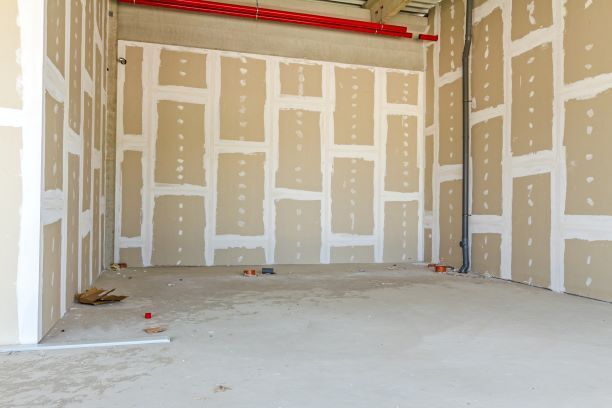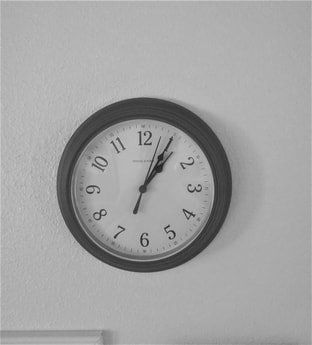DRYWALL REPAIR SERVICE DENVER
If you own a home, you know how easy it’s to put a hole in the drywall. Whether it’s from a door handle or something falling over onto your wall. You should know that drywall is easy to patch or fix and the cost is usually reasonable.
Repairing Holes
Traditionally, when you had to fix a hole in drywall, a home improvement professional would try to square up the hole and then put in wooden braces to support a new square of drywall. Luckily, they have created aluminum patches, which can go directly over the hole without having to square it up.
Repairing Cracks
Cracks will occur when a house starts to settle. Therefore, it’s not rare to find cracks in the sheetrock in new and old homes. Fill the crack with joint compound or spackle and then apply a mesh tape over the top. Once the mesh tape is applied, cover that with spackle and feather out the ends.
Repairing Nail and Screw Holes
The most common drywall repair that will be needed is filling in old nail holes or screw holes with fixtures or pictures that were attached to the wall. Another repair from screws and nails is when vibrations cause them to loose.
Tape and Mud
Sheetrock installation and repair are the most common home improvement projects many homeowners find themselves faced with. Whether you are adding a new wall or partially replacing wallboard's in your home as part of a home improvement project. You may find yourself in a situation where you need to replace drywall in your home. This article covers a few tips for making sure the finish on your repair or replacement is held together properly.
The first thing that needs to be done, is applying the drywall tape along the seam between the two pieces of sheetrock or drywall. Try to do this, so the seam runs along the center of the tap. Once the tape is in place, you can start applying joint compound by making use of putty knives.
You need to apply about 3 coats of joint compound. After the first coat dries, ensure to sand down the joint compound on the seams and the nails before continuing. This will ensure that the surface is smooth as the coat is applied.
Once the application of the coat is done and let it dry, ensures to sand around the edges of the seams and nails one last time to ensure the surface is as smooth. You need to wipe down the wall with a dry rag to get rid of any dust that’s on the surface. Now you are ready to prime and paint your walls.
Fun History Fact:
Drywall can often be referred to by different names, it is made from a material called Gypsum combined with other additives and stuffed between 2 pieces of paper. People back then called this wall board, plaster board, and at it's birth in 1916, gypsum board. Before these times many homes were lined with plaster which even today is still a very durable material but is more labor intensive. At the inception of sheet rock, people deemed this as a fireproof wall because it is non-combustible unlike wood or most plaster, this new type of wall was much cheaper, lighter and gets installed in a fraction of the time of plaster. The concept really never caught on until the 1940's and now virtually every home in the United States has some form of sheet rock.
Can I Repair Drywall Holes or Cracks Myself?
If you have cracks in your drywall or any other wall surface, chances are your drywall repairs will be much less extensive than some of your other repair jobs. Unfortunately, that doesn't mean it is going to be any easier. In fact, if the repairs you are having done involve the use of specialized tools and materials, your repairs can be very costly and time-consuming.
Fortunately, many drywall repairs can be made very quickly and easily. All that you need are a few basic tools, the correct materials, and some basic tricks of the trade. Lift gently: Most drywall repair shops sell 2-foot square pieces of drywall, which come in handy for making quick repairs.
Once you're there, inspect the drywall carefully for any areas that may be more trouble than they are worth. It's important not to ignore the areas that seem like they will be difficult to repair because these may eventually become major problems. For example, if a hole has been cut into the drywall and it's very noticeable, then it could be a sign of an existing problem.
Next, decide what area of the wall needs repairs and take note of the damage. Do some light sanding to remove any rough spots or rough edges. Then, clean the damaged area with any cleaning solution that you can get. Then, make a mix of the solution and water to apply to the damaged area. This will help seal the damaged area and prevent future moisture from escaping.
Now, take the pieces and parts of the drywall that you have cleaned and place them on the floor where you will be doing the installation work. These pieces will be needed in the future. Place the pieces at strategic locations around the drywall to make sure that it is covered as much as possible and prevents new moisture from penetrating the drywall.
Once the installation part of the job is finished, you will have a pile of wet and drywall that will need to be dry cleaned. Use a good, old-fashioned wet vacuum cleaner to get out the wet material and then use the appropriate dry cleaning product to remove the dried-out wet material.
When you are done cleaning the dry wall, you will need to remove the padding so that you can re-attach the drywall in the proper location. This can be done in a couple of different ways. The first way is by cutting the padding off, the second way is by laying the patching underneath the existing drywall.
You should now have two dry wall patches ready to reinstall onto your drywall. After you've done that, put some glue on both patches to secure the patches to the drywall. You should be able to have your drywall back in place in no time.
Finally, apply the new drywall to your walls. You can do this using your regular paint, or you can use a wood-based epoxy. If you choose to use a wood-based epoxy, make sure that the patching you are putting on the drywall is completely covered before you apply the wood-based epoxy.
When you're finished with the drywall patching, make sure that you have completely sealed all of the holes or openings that you had left open. Once you've done that, you can remove the patching and replace it on the drywall. using masking tape. over each hole.
And here is the best part! Once you've removed the tape, lay the patching on the drywall and voila!
By using a drywall patch, you are able to save yourself a lot of money and time, while not having to make a major remodel. After you've done this, you will know exactly where to go to install new drywall. on your walls and that is something that can't be said for most major remodels.

* Indicates required field


